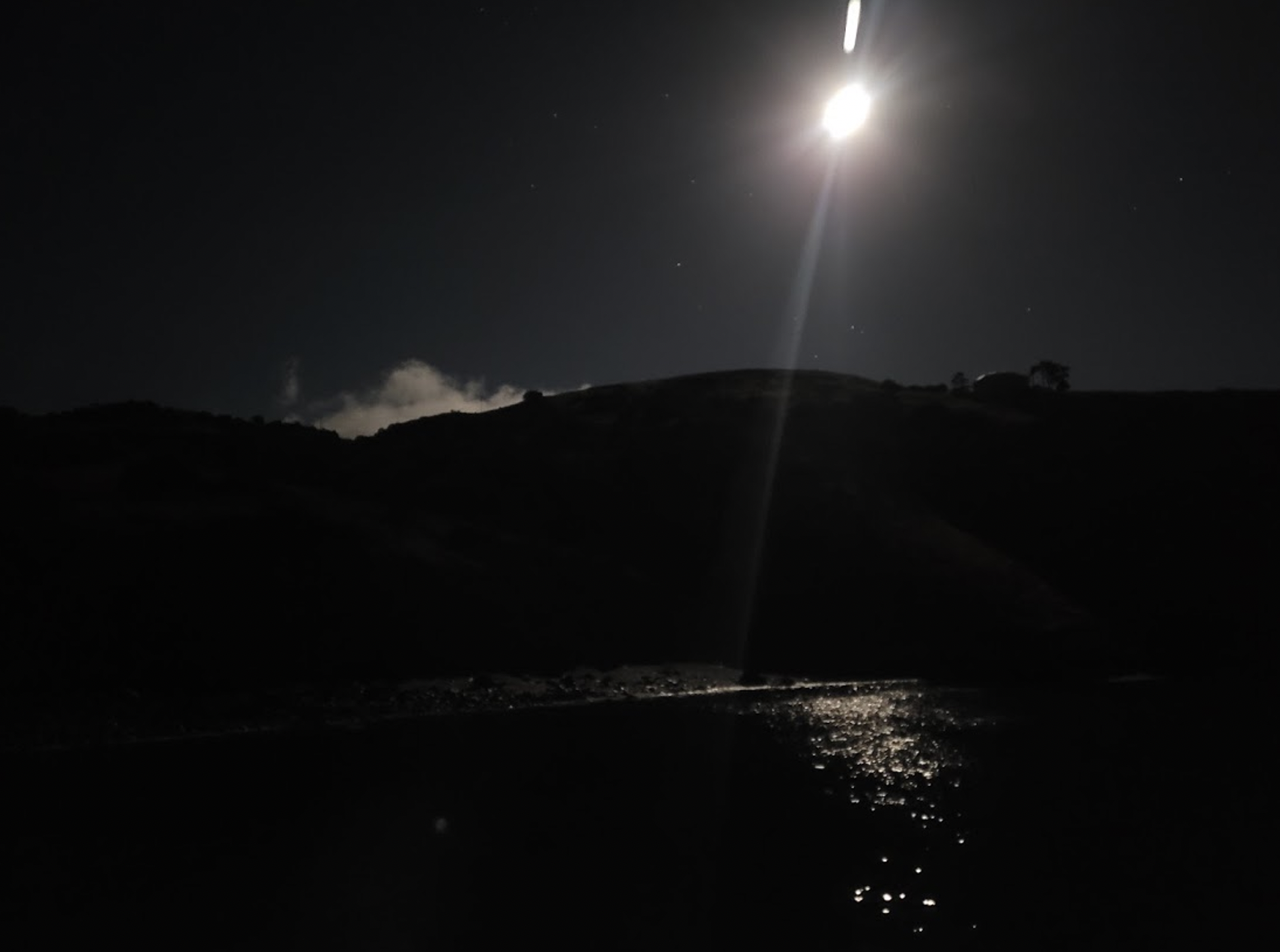By: Inessa Chandra
The blaring trumpet solo from Morning in Slag Ravine wakes me, and my hand automatically swipes at my phone to silence the alarm. Groaning, I get ready to start my work, and as I walk down to the blue house where my project resides, I take a moment to admire the constellations that are beginning to appear as the last rays of sunshine fade from the sky. This summer, I’m exploring the vampiric lifestyle.
Not really, though that’s what it feels like when all the world’s asleep and I’m performing my nightly sampling. Why am I actively ignoring my body’s natural wake-sleep patterns? To study the daily biological cycles in giant kelp, of course.
You’re probably somewhat familiar with the biological clock in humans- it makes your stomach growl or your eyes get drowsy around the same time of the day, gives you jet lag when you cross time zones, and even determines whether you’re a morning person or a night owl. This is called the circadian clock, and it tells you to anticipate daily events to optimize your physiology like your metabolism.
A lot of organisms have circadian clocks, from cyanobacteria in the sea to most animals and plants. In plants, clocks not only control daily physiology like photosynthesis and water use, but also seasonal events like flowering or leaf fall. Clocks also help organisms acclimate and adapt to their local environment. For example, organisms near the equator have slightly different clocks than those near the poles. This helps them to adapt to differences in the manifestation of seasons (e.g. summer day length) in their respective regions. This kind of evolution often happens during crop domestication, especially when you expand where crops can be grown.
In a world with land shortage and an ever-growing need for more sustainable resources, giant kelp is a promising new crop. While it is not currently directly consumed by humans like other species of seaweed, it does provide ingredients found in a myriad of consumer products from ice cream to shampoo. It is being used in livestock feed, and research suggests that seaweed in feed can reduce livestock methane emissions, reducing greenhouse gases. Furthermore, kelp is being developed as a carbon-neutral biofuel, which means its photosynthetic carbon dioxide uptake during growth will balance the carbon release during burning of the fuel. Other uses are also being developed from alternative fiber for clothing to bioplastics. In addition to the resources it provides, giant kelp provides important services including carbon sequestration, excess nutrient run-off extraction, coastline protection, and habitat structure for one of the most biodiverse ecosystems in the ocean- kelp forests.
Giant kelp is the largest and fastest growing seaweed, with adults reaching lengths of 15-20m within 1-3 years. It doesn’t require a huge amount of effort to grow- it gets its energy from the sun and nutrients in the sea. It can be found as far north as Alaska and as far south as Australia, and although it’s a coastal species, there is current research into a strategy for open-ocean farming, an area of the world currently underutilized by humans.
Like with most crops, giant kelp will be bred to maximize performance, usually characterized by yield and growth rate. Because these traits are under clock control, many terrestrial crops indirectly evolved the circadian clock in pursuit of better performance. Here, we have the opportunity to directly breed for clock adaptations that simultaneously enhance multiple desirable traits.
There’s a catch- we don’t actually know much about the circadian clock in giant kelp- or any seaweed, for that matter. There’s some evidence of a clock controlling kelp cell division, but that’s pretty much it. We haven’t even definitively determined whether photosynthesis is under circadian control, which seems like the most obvious and logical physiology to temporally regulate given the daily cycle of sunlight. We don’t know whether other environmental cycles like temperature, which influences clocks in other organisms, affect the clock in giant kelp. This is especially important as ocean warming could mess up these temperature cues and make kelp less productive and healthy.
That’s where I come in. I investigate how kelp biology changes on a daily time scale. This summer, an undergraduate researcher, Janell, and I have been measuring pH and dissolved oxygen to estimate photosynthesis and collecting tissue samples to see what genes and therefore physiological processes are being turned on and off at different times of the day. She takes samples during the day while I take samples at night. From these, we can determine whether giant kelp can maintain biological patterns even in the absence of environmental cycles, whether these rhythms take cues from temperature cycles, and what kind of patterns emerge in natural kelp beds.
So if you happen to be on Catalina this summer and hear some noises in the night- that’s just me, collecting kelp samples to investigate the circadian clock in giant kelp in the hopes of growing a more sustainable world.




